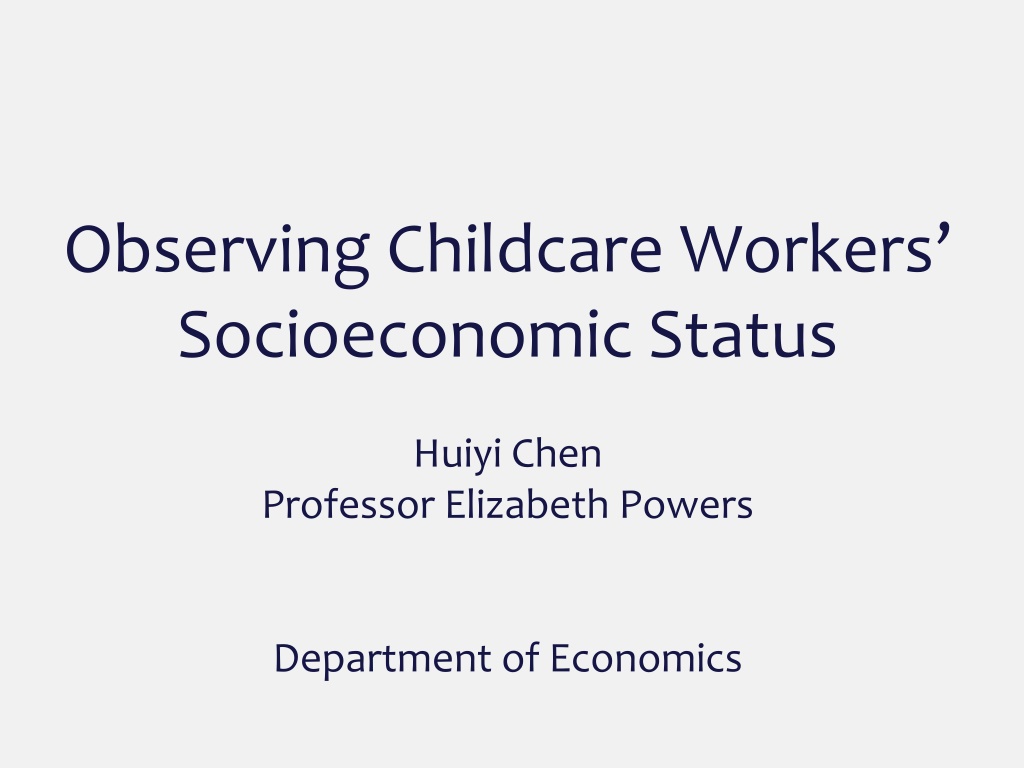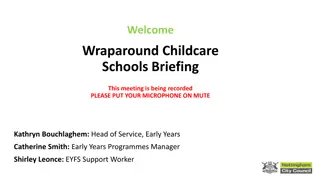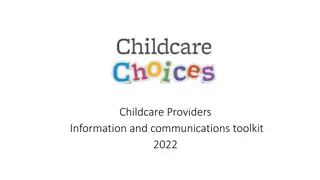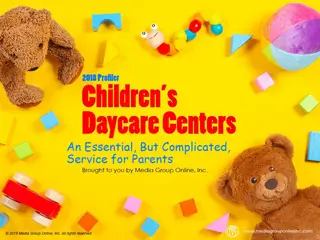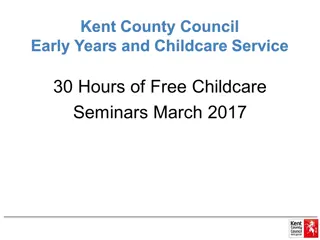Examining Socioeconomic Status of Childcare Workers in Illinois
Childcare workers in Illinois earn a median hourly wage of $10.5, ranking 35th in hourly wages among 730 occupations. The study aims to understand the flexibility and demographics of childcare workers compared to other occupations with similar wages. Assumptions suggest childcare work is predominantly done by women, trades wages with flexibility, and requires lower educational attainment. Data is collected from the OES and ACS to analyze trends from 1997 to 2015. Initial findings indicate a higher level of work flexibility and female representation among childcare workers. Further exploration into factors like education, number of children, age, and race is suggested.
- Childcare workers
- Illinois
- Socioeconomic status
- Occupational Employment Statistics
- American Community Survey
Download Presentation

Please find below an Image/Link to download the presentation.
The content on the website is provided AS IS for your information and personal use only. It may not be sold, licensed, or shared on other websites without obtaining consent from the author. Download presentation by click this link. If you encounter any issues during the download, it is possible that the publisher has removed the file from their server.
E N D
Presentation Transcript
Observing Childcare Workers Socioeconomic Status Huiyi Chen Professor Elizabeth Powers Department of Economics
Overview Childcare workers earn little Median hourly wage 5% lowest in Illinois, 2015 $10.5/hr 730 occupations, rank #35 in hourly wage low-high What do they do? Licensed, homecare & daycare center Why? Gender Flexibility Education? Skill requirement?
Rationale To find out the flexibility & demographics of childcare workers A group of controlled variables 10 other occupations w/ similar Wages Number of workers Years Geography Other omitted variables?
Assumptions The nature of childcare workers A women s job Caretakers Trade wages with flexibility Low skilled? Part-time > full-time Lower educational attainment
Data The Occupational Employment Statistics (OES) Bureau of Labor Statistics, yearly base Employment, median/mean wage, percentile The American Community Survey (ACS) U.S. Census Bureau, yearly base Household & individual Work hours, demographics, education, etc.
Methodology Access the OES data Find 12 occupations with median hourly wage less than 1 sd away from the median Similar employment A trend on 12 occupations median wages 1997-2015
Methodology Con. Access the ACS data Flexibility of work Part-time full year/part year, full-time full year/part year Gender distribution 10 occupations
Conclusion/Next Steps Childcare workers in Illinois have relatively higher flexibility of work Childcare a relatively higher female distribution Questions Do women tend to trade flexibility with wages? Other variables to look at: education, # of children, age, race etc.
